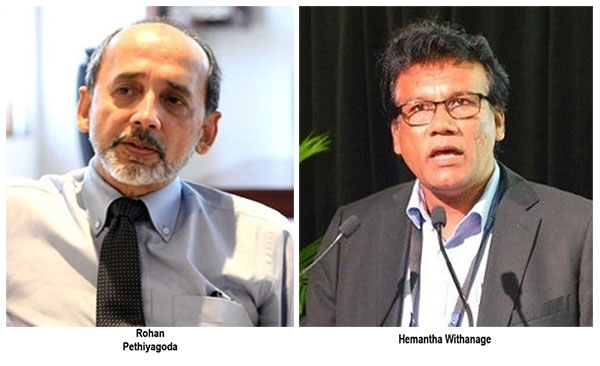News
Controversy over plan to bring Bisons from India

By Ifham Nizam
Sri Lankan High Commissioner to India and a Sri Lankan biodiversity scientist as well as a public policy advisor, are working to import six Bisons from India without permission from the Department of Forest Conservation and the Department of Wildlife Conservation, the Centre for Environmental Justice (CEJ) alleged.
CEJ Director and Chief Advisor Hemantha Withanage yesterday said that senior officials of the Department of Forest Conservation and the Department of Wildlife Conservation had denied giving permission for the project.
“The Department of Wildlife Conservation states that these animals are found in the central region of India and there are problems regarding their adaptation to Sri Lanka,” he added.
Sri Lanka’s biodiversity expert, Rohan Pethiyagoda, contacted for comment said, he was under the impression that the CEJ had been misled by the claim in an Indian newspaper that there was a proposal to reintroduce gaur (which became extinct here some centuries ago) to the wild in Sri Lanka.
“The demography of Sri Lanka has changed drastically for that to be feasible, and we have enough and more problems with human-elephant conflict. All I requested High Commissioner Milinda Moragoda was to ascertain whether the Indian government might in principle be willing to entertain a request from Sri Lanka to establish a herd of gaur in our National Zoological Gardens.”
He also said if the Indian authorities had indicate their willingness to entertain such a proposal, then the Department of National Zoological Gardens of Sri Lanka can take a decision whether the latter would make a formal proposal.
“That is all there is to this. Of course, there may be those who are opposed to the idea of the zoo maintaining a herd of gaur. But in my opinion, most Sri Lankans would like such a move. After all, the gaur
is very much a part of our folklore. Imagine, if elephants became extinct in Sri Lanka, would anyone oppose maintaining a herd of captive elephants at Pinnawela? I doubt it. Unfortunately, many people have been misled by this erroneous newspaper article.”
Dr. Pethiyagoda also said that the reintroduction of the species to the wild was a hugely expensive, scientifically complex and time-consuming enterprise (it takes decades of planning, not years). Sri Lanka had not reached the point of considering the introduction of this propsal any time in the foreseeable future, he said. “But I would be astonished if anyone thought there is anything wrong with the last large mammal species to become extinct in Sri Lanka being represented in our national zoo.”
Withanage, who is also the current President of Friends of the Earth International (FOEI), said he did not approve of the move to bring those animals to Sri Lanka. “Do we even have habitats that suit such a species to survive? Withanage asked. He pointed out that reintroducing gaur is a problem. “Only a third of the forests that existed in Sri Lanka 300 years ago remain today.”
Commenting on the conflicts between humans and animals in Sri Lanka, Withanage said that the loss of human lives as well as the loss of animal lives should be taken into consideration. “The country loses about 350 elephants and 100 human lives a year due to the elephant-human conflict, and it is necessary to question the mindset of those who want to bringing in a problem that does not exist in the country.
“While some say that Sri Lanka already could not handle the existing number of elephants here, introducing this species to compete with elephants and feeding them in the limited pastures is something that we should not even think of.”